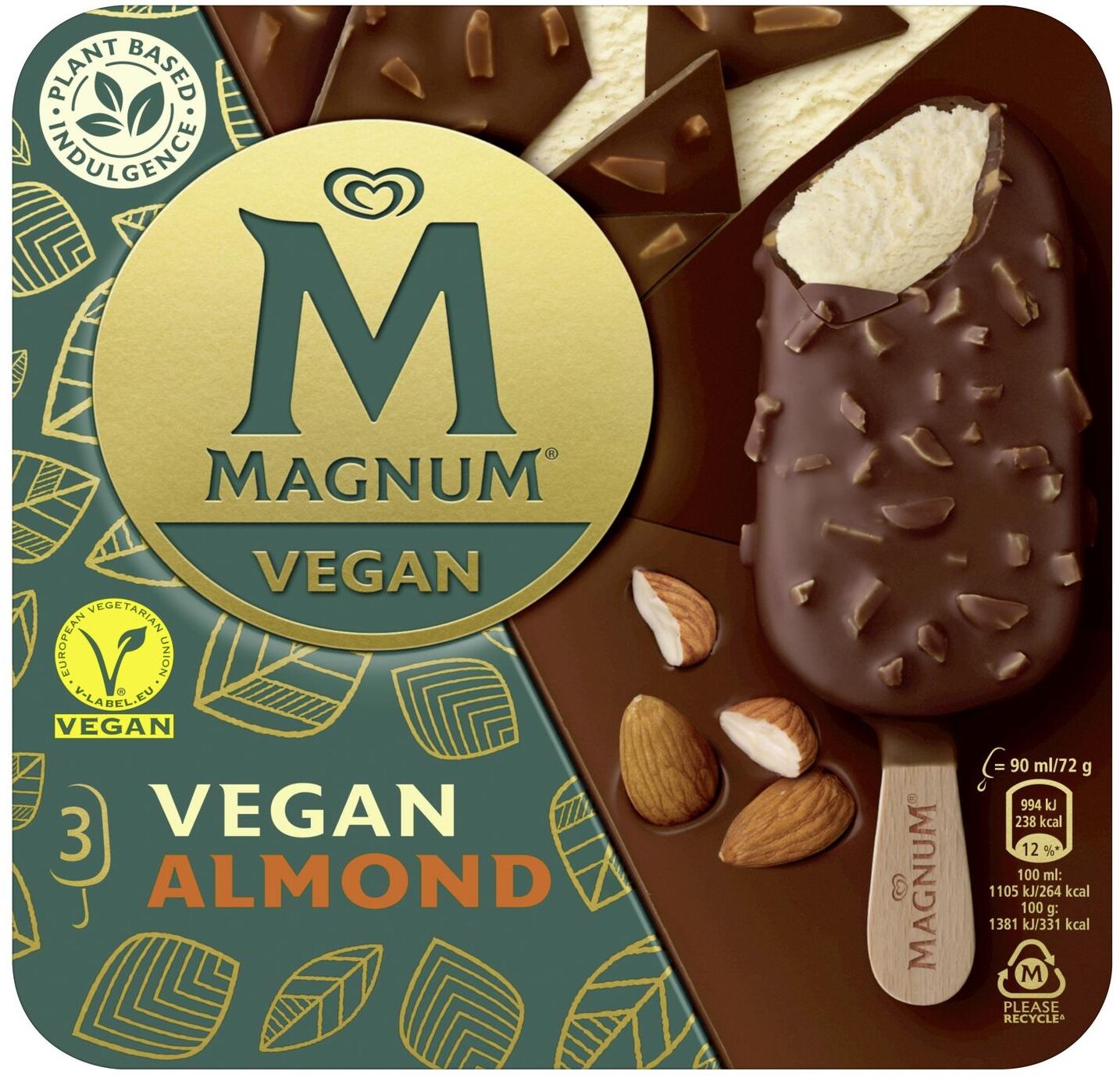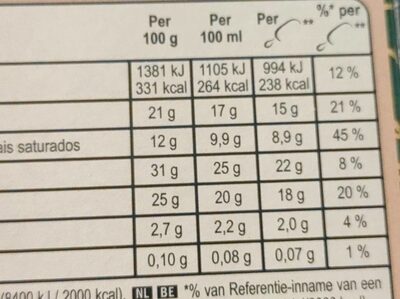Vegan Almond Ice Cream - Magnum - 216 g
This product page is not complete. You can help to complete it by editing it and adding more data from the photos we have, or by taking more photos using the app for Android or iPhone/iPad. Thank you!
×
Some of the data for this product has been provided directly by the manufacturer Unilever France.
Barra-kodea: 8714100658499 (EAN / EAN-13)
Izen arrunta: Vanilla vegan ice cream coated with chocolate couverture with almonds
Kopurua: 216 g
Ontziratzea: en:Plastic, en:Box, en:Cardboard, en:Film, en:Frozen, de:Green dot, de:Produkt, en:Sac de transport, en:Sachet, fr:Boîte en carton
Kategoriak: en:Plant-based foods and beverages, en:Dairy substitutes, en:Desserts, en:Frozen foods, en:Frozen desserts, en:Ice creams and sorbets, en:Plant-based ice creams, en:Plant-based ice cream bars
Etiketak, ziurtagiriak, sariak:
en:No gluten, en:Vegetarian, en:Vegan, en:European Vegetarian Union, en:European Vegetarian Union Vegan, en:Green Dot, en:Pure cocoa butter, en:Rainforest Alliance, en:Europäische Vegetarier-Union, en:Europäische Vegetarier-Union Vegan, en:Grüner Punkt, en:Sans gluten, en:Vegetarisch



Link to the product page on the official site of the producer: https://www.magnumicecream.com/uk/produc...
Dendak: Carrefour, Eroski, Alcampo, Woolworths, Tesco, Coles
Saltzen diren herrialdeak: Australia, Frantzia, Alemania, Espainia, Erresuma Batua
Matching with your preferences
Other information
Preparation: Pour une dégustation encore plus onctueuse de votre crème glacée, sortez-le quelques minutes avant de servir.
Conservation conditions: À conserver entre -25°C et -18°C
Customer service: Magnum Relation Consommateurs, Unilever France, 20 rue des Deux Gares 92842 Rueil-Malmaison Cedex
Report a problem
Datuen iturria
The manufacturer Unilever France uses Equadis to automatically transmit data and photos for its products.
Product added on by neptuno
Last edit of product page on by lcmortensen.
Produktuaren orria -gatik editatua alia, archanox, ayecptn, charlesnepote, date-limite-app, ecoscore-impact-estimator, foodvisor, grumpf, inf, itsjustruby, kiliweb, macrofactor, mauriceka, moon-rabbit, openfoodfacts-contributors, org-unilever-france-gms, packbot, quechoisir, roboto-app, scanbot, shisma, spotter, thaialagata, wriya, ysfitnessde, yuka.UjVrRkw1d1p2TWNOcFBadXgwMlAyZjkrNUtldFptM3RBc3djSVE9PQ, yuka.sY2b0xO6T85zoF3NwEKvlm5DTobcvjzJFg7vixWl-crSIZjPPfJQ25KjDKs, yuka.sY2b0xO6T85zoF3NwEKvlmVBVtzj_h_aJT_4oleKz4aqCZrTOehs_LeqK6g, yuka.sY2b0xO6T85zoF3NwEKvlmdfUorCjCrqCCD6hEzV7NnUDKf0Zuhc7bj9Pag, yuka.sY2b0xO6T85zoF3NwEKvlnBtDuD_syzDbCDhtGSNwe2NPLbhP_pX6Zrab6s.













